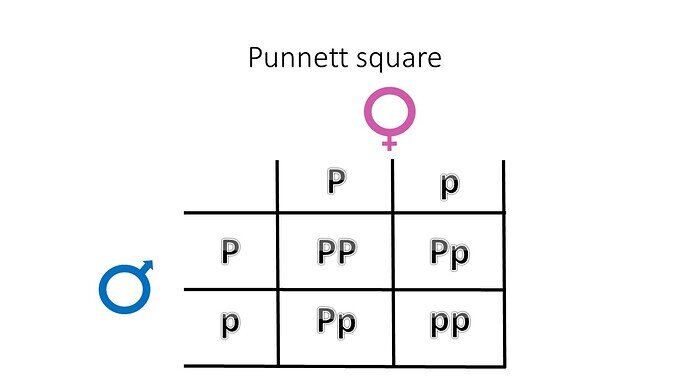After reading your response several times. I realized that your
response was written quickly without looking back at what I had said.
I say this because I stated exactly the same things that you stated.
There is no difference between us and The statement at the beginning of
your reply
(yourself included, are discussing them incorrectly) is simply in error.
Examples of similarities:
My statement …
Also it should be there are two ways of discussing a gene. One is how it is expressed i.e. what it does within
the body chemistry.
And Two its relationship to other genes.
Thus Leatherback has incomplete dominance in the
first instance and autosomal recessive in the second.
Your statement:
There is how a gene is expressed: recessive, incomplete-dominant, dominant, sex-linked, etc.
and there is how the gene is inherited: dominant or recessive.
These two statements are EXACTLY the same.
My statement
To calculate a Punnett Square you would use the second. …( i,e, for a single recessive trait)
This is ALL I say about a Punnett Square.
Yours
Punnett square is used to calculate the statistical potential a given pairing can produce. That is all.
Nowhere do I say the following
Your statement
On the basis of nothing but the shorthand used to draw out a Punnett square, both recessive and
incomplete-dominant share the same pattern however, that does not change the fact that you set up
the square based on the behaviour of the gene. You do NOT use the appearance of the square to define
the identity of the gene.
The definition of a Punnett Square in wikipedia
The Punnett square is a square diagram that is used to predict the genotypes of a particular cross or breeding experiment.
================================================
My statement
The manner in which the Leatherback or Silkie gene is expressed is incomplete dominance.
Yours
it is expressed in an incomplete-dominant manner
Exactly the same.
This statement has no relevance
your statement.
(the “expressivity” you note, which is wholly different from penetrance).
I defined these terms only. Did not equate them in any manner
my statement
The terms penetrance and expressivity quantify the modification of the influence on phenotype of a particular
genotype by varying environment and genetic background;
they measure respectively the percentage of cases in which a particular phenotype is observed when
the specific allele of a gene of interest is present and the extent of that phenotype.
================================
My closing statement
Thus to sum up. The manner in which the Leatherback or Silkie gene is expressed is incomplete dominance.
The manner in which inheritance is calculated is autosomal recessive.
Yours
Leatherback is inherited in a dominant manner (e.g., any animal with a single Leatherback gene has a
non-wild-type phenotype) and it is expressed in an incomplete-dominant manner (e.g., an animal with one
copy of the gene has a phenotype different than an animal with two copies of the gene.)
The same!!
==========================================
I also feel that the appropriate reference to the recessive gene would be “Silkie” as Leatherback is only the incomplete dominance
expression of the “Silkie” gene. While Leatherback is still a valid reference to its expression as a recessive trait.
I again refer to the manner in which human genetic disorders, like Sickle cell anemia, are referenced
i.e.
another well-known autosomal recessive Sickle cell disease
Sickle cell disease also exhibits incomplete dominance and haploinsufficiency.
Individuals who carry a single disease allele (heterozygotes) have an intermediate trait
(sickle cell trait) that is phenotypically somewhere between unaffected (homozygous normal allele)
and severely affected (homozygous disease allele giving rise to sickle cell anemia).
These individuals are not considered completely unaffected, hence incomplete dominance.
 )
)